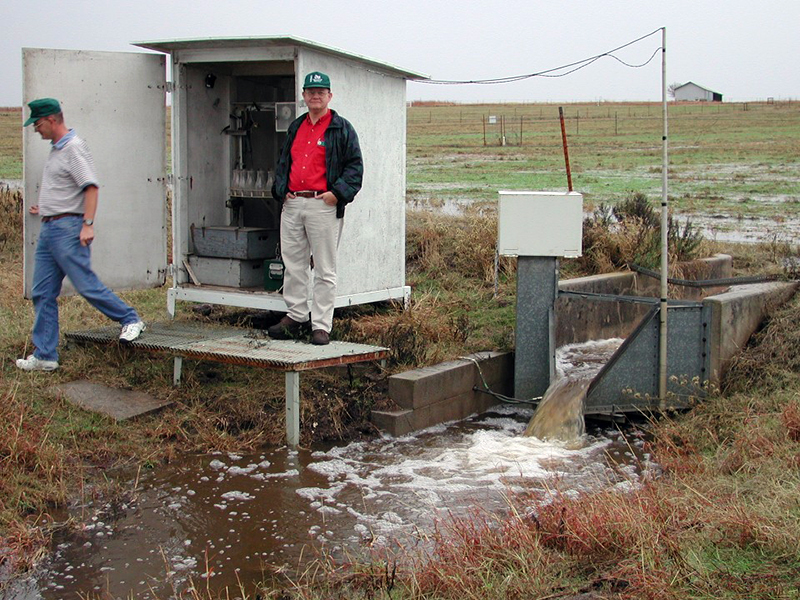Researchers recently summarized 23 years of data from the site in the Journal of Environmental Quality, showing the effects of native tallgrass prairie and crop-livestock systems on erosion and water quality (nitrogen, phosphorus, and suspended sediments).
The watersheds were equipped to measure precipitation and surface runoff quantity and quality. Initially, all watersheds were in native tallgrass prairie, but later four of the them were cropped into winter wheat (two conventionally tilled, one no-till, and one no-till with a summer forage crop), while the other four watersheds remained in native tallgrass prairie.
The authors described available archived historical data, including methods of collection and analyses. Such a long-term research database is essential for determining the impact of different agricultural management systems, understanding the processes related to hydrologic transport and water quality, and validation and development of models capable of defining hydrology responses and water quality.
Adapted from Nelson, A., Moriasi, D., Fortuna, A.‐M., Steiner, J.L., Starks, P.J., Northup, B. and Garbrecht, J. (2020), Runoff water quantity and quality data from native tallgrass prairie and crop‐livestock systems in Oklahoma between 1977 and 1999. J. Environ. Qual.. Accepted Author Manuscript.
Original post https://alertarticles.info


